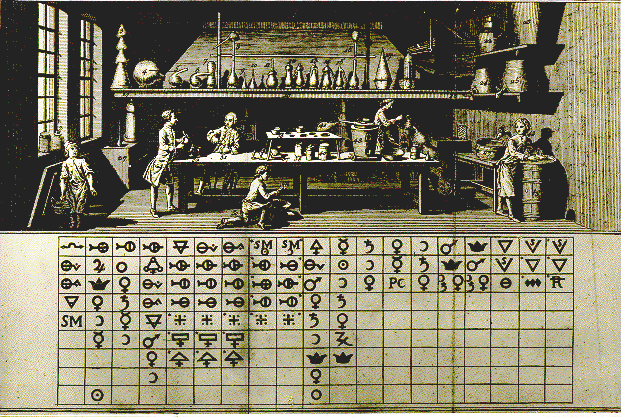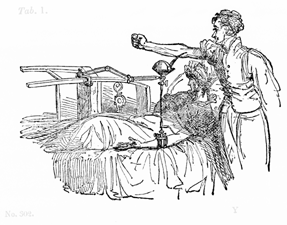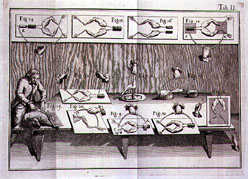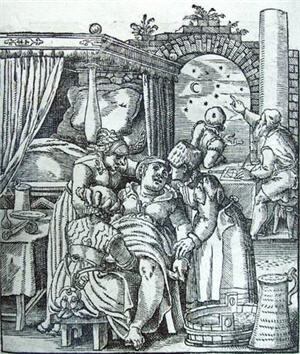|
Literature 110 - Popular Literature Spring 2013 - Ticket #62740 // Marjorie Coverley Luesebrink, MFA, Instructor |
|
Unit 2b: Horrors! continued Science becomes Science Fiction Science in 1800: The words "science" and "technology" have slippery meanings for us. On the one hand, there have been "scientists" since the first shaman observed the movements of the moon, planets, and stars in the Stone Age. And technology has been around from the moment that these sky-watchers discovered that it was best to hunt certain animals and gather certain foods under different "moons" - i.e. months. In modern parlance, though, we tend to think of the rise of science and technology as something that happened in the Renaissance. In any case, the popular mind began to focus with great excitement (most relevant to our theme of the Monster) on the preliminary experiments with blood, bodily fluids, electricity and their relationship to life.
Blundell's Gravitator
"Perhaps," Mary Shelley recalled of her talks with Lord Byron and Percy Shelley, "a corpse would be reanimated; galvanism had given token of such things."
Luigi Galvani, 1737-1798, Italian physician and physicist.
Louis Galvani
Body Parts and Grave robbing
Childbirth in the Middle Ages - note the Astronomer charting the stars for the Astrological sign of the child Childbirth: Pregnancy and childbirth, as well as death, were an integral part of Mary Shelley's young adult life. She had four children and a miscarriage that almost killed her. This was all before the age of twenty-five. Only one of her children, Percy Florence, survived to adulthood and outlived her. In June of 1816, when she had the waking nightmare which became the catalyst of the tale, she was only nineteen and had already had her first two children. Her first child, Clara, was born prematurely February 22, 1815 and died March 6. Mary, as any woman would be, was devastated by this and took a long time to recover. If you are not familiar with Childbirth practices in the Middle Ages and in recent history, please see this SideBar information page on Women and Childbirth. So we can see that a cluster of important scientific and medical ideas were at work around 1800 - the discovery of bodily fluids, the capture of electricity, the medical fascination with cadavers from the graveyard, and, sadly, the ongoing terrors of childbirth. All of these came together for the first time, really, in literature, in the creation of a Science Fiction genre that pre-supposed that science might be able to do what had never been done before - create life. Since that time, Science Fiction, as a popular genre, has grown to include many other kinds of themes and possible worlds- we will explore these in Unit 8. Still and all, the humble beginnings were here, with Mary Shelley and the birth of her Monster.
continue on to "Readable" Characters Patterned Structure Reassuring Plot Clear-cut Value System Mythological and Folk Referents Intimacy of Style and Tone
MENUBAR: About Your Class // Class Syllabus // Lecture Notes // Reading List // Recommended Reading // Assignments // Grading Policies // Contact Your Instructor // Announcements // Discussion
Marjorie Coverley Luesebrink, your Instructor, is a Professor of English in the School of Humanities and Languages Irvine Valley College, Irvine, California
|
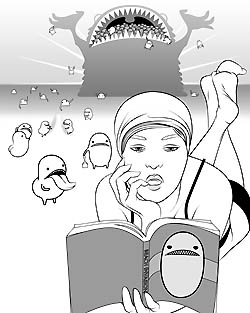 Irvine Valley College
- Online Literature Study of the School
of Humanities and Languages
Irvine Valley College
- Online Literature Study of the School
of Humanities and Languages
